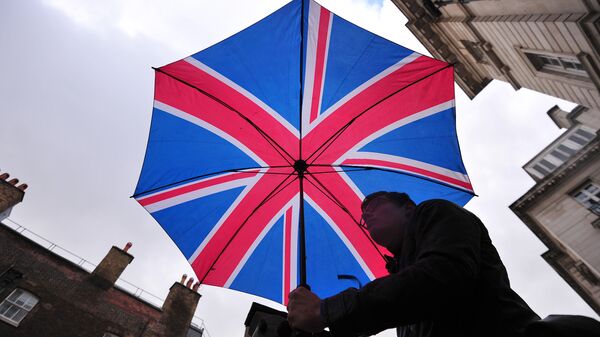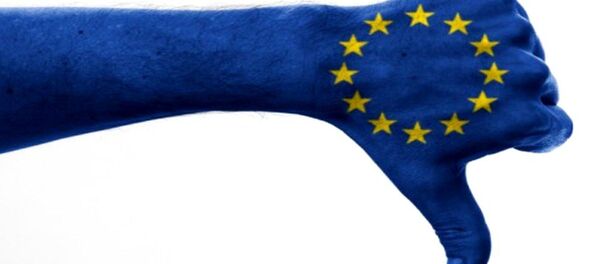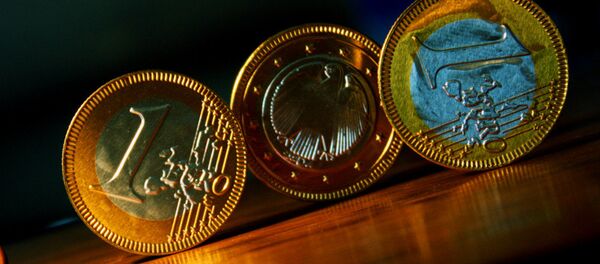While the market fears might be exaggerated slightly given the amount of anxiety spreading far and wide due to the prevailing negative global financial tendencies, there are currently two base scenarios laid out on the GBP performance outlook. Major market participants are betting on the sterling’s FX rate to settle from as low as $1.27 or as high as $1.60 by late 2016 compared to its more common $1.50 average of the past several years.
Europe’s two largest financial institutions, the UK-based multinational bank HSBC, also Europe’s biggest, and the German Deutsche Bank, laid out two drastically different scenarios for the British pound’s FX rate performance in 2016, as the currency’s recent multi-year lows stirred bearish sentiment in the market.
Given the UK economy is heavily reliant of financial sector with manufacturing generally underperforming and hardly as developed as that of Germany, the outlook on broader economic conditions has become complicated just as 2016 begun. Besides, the UK has been posting a current account deficit during at least the entire past decade, with deficit figures reaching some 17.5 bln sterling in mid-2015.
All these factors contributed to the sterling’s weakening to about $1.4221 after trading within range of $1.4080-1.5930 during the past 52 weeks.
Aside from macro fundamentals, Bank of England (BoE) governor Mark Carney noted on 19 January the base interest rate hike outlook is marred by underperforming inflation, among other factors, meaning monetary tightening would be delayed.
The currency market immediately responded with selling bets on the sterling, as previous anticipations were the BoE would hike rates from the current 0.5% relatively soon in order to outpace the pace of monetary tightening of the US Federal Reserve.
Subsequently, the British bank HSBC Holdings Plc responded to negative market sentiment saying the GBP would rise to as high as $1.60 by late 2016.
“We continue to expect a rate rise sooner than the market expects and that continues to support a view of sterling higher,” Daragh Maher of the New York branch of HSBC. “Ultimately we will be driven by Brexit and rate expectations in the U.K. But for now, the fixation is other factors”.
The aforementioned “other factors” might be identified as crude prices and financial markets’ performance, stocks, in particular, as the UK economy turns out to be excessively reliant on external fundamentals, resulting in its high exposure to international risks.
On 21 January, the sterling hit its 2009 bottom at $1.4080.
The German-based Deutsche Bank, meanwhile, voiced support to the market’s bearish outlook in regard to the sterling FX rate performance in 2016. Deutsche Bank in the world’s second-largest currency trader, and, from the German viewpoint, a devaluation is inevitable, in particular, in Britain’s economic reality.
Deutsche Bank expects the sterling to sink to as low as $1.27 by the year’s end. Other financial institutions, namely, the US-based JPMorgan Chase, the Dutch ING Bank, and Swiss Credit Suisse also cut their forecast on the sterling during past several weeks, as the broader markets do not expect any substantial recovery either in stock or oil prices anytime soon.
Currently, the markets consensus expects the BoE base interest rates to remain unchanged at 0.5% until March 2017. Yet, Governor Carney is delivering his speech before Parliament on 26 January, possibly unveiling his monetary policy planning. The British GDP gained momentum in Q4, at 0.5% growth over previous quarter compared to past figure of 0.4%.
UK inflation, was zero in late 2015. Meanwhile, recent financial market volatility triggered a moderate selloff in British bonds, with 10-year gilt dropped 0.44, or 4.40 GBP per 1000-GBP face amount, to 102.555, and the yield rising 0.05%, indicating a broader market turmoil and reflecting negatively on the sterling’s FX rate.




